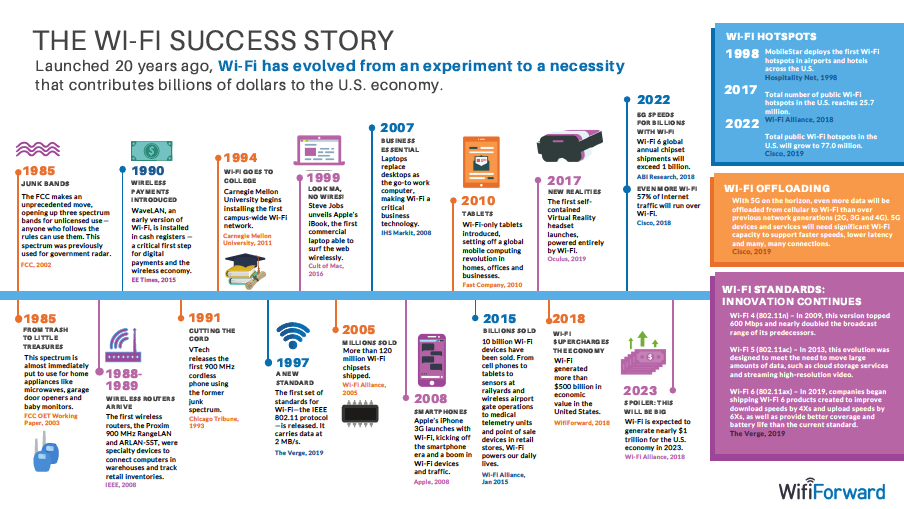Twenty years ago this week, Steve Jobs famously introduced consumers to Wi-Fi by passing the new iBook laptop through a hula hoop to show off its wireless Internet connection. Today, Wi-Fi is an integral part of our lives, connecting us at work, at home, on trains, planes and more. It’s hard to remember a time before this omnipresent connectivity — but it wasn’t so long ago.
Interestingly, Wi-Fi was born out of an experiment. In 1985, the Federal Communications Commission made an unprecedented move and opened up several small sections of airwaves for unlicensed use, meaning that anyone who followed the rules could use that spectrum. Engineers began testing in this space, using it for early wireless home appliances like baby monitors and garage door openers. Several years later, engineers in warehouses used the spectrum to connect multiple computers to track inventory — and Wi-Fi was born!
Wi-Fi reached consumers en masse several years later when Steve Jobs introduced the Wi-Fi-enabled Apple iBook in 1999. From then on, we no longer were tethered to a cord for work or play online. And in 2008, when the iPhone 3 incorporated both cellular and Wi-Fi connectivity, there was no turning back. As Wi-Fi has become faster and more sophisticated, everything got “smarter.” Wi-Fi enabled cool tech innovations in our homes such as tablets, VR headsets, smart refrigerators and more. From sensors at railyards and wireless airport gate operations to medical telemetry units and point of sale devices in retail stores, Wi-Fi powers our daily lives.
From humble beginnings in the “junk bands” of our airwaves several decades ago, Wi-Fi has become the lifeblood of our economy, adding more than a trillion dollars in value. Wi-Fi is a workhorse, supporting offloading from mobile. This keeps consumer costs low and will play a huge role in the rollout of 5G networks.
But in order for all of this to happen, we need smart spectrum policies that make way for additional unlicensed spectrum. We’ve seen the magic that can happen in these “junk bands” when we innovate. Let’s keep our airwaves open for this innovation for decades to come.
Learn more about the history and the future of Wi-Fi from our Wi-Fi Timeline: The Wi-Fi Success Story.
Download the timeline here.

